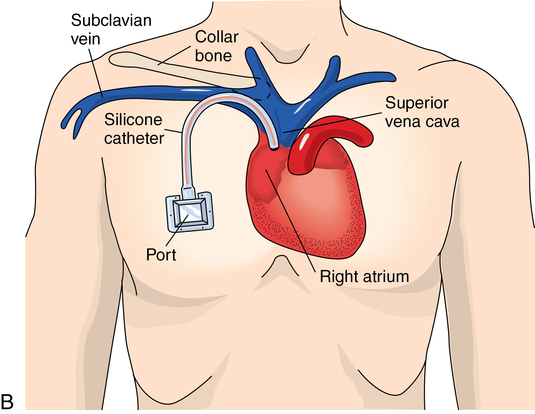1. Discuss patient education for a variety of therapies, common types of intravenous therapy, and delivery of supplies. 2. List several types of infusion pumps, and list some examples of the types of medication therapy in which they are used. 3. List technician responsibilities in infusion therapy in home health care or long-term care. Patient education is vital in the administration of IV therapy at home, and it should begin before a patient’s discharge from the hospital. Patients should be instructed about the insertion of an IV catheter, peripherally inserted central catheter (PICC) line, or other implantable device that will be used to deliver the infusion. A PICC line can be used to deliver all types of therapy (Figure 10-1). These tiny tubes typically are used for 72 hours since they are inserted in veins close to the surface. Long-term therapy may require weeks, months, or even years, and special catheters designed to be inserted in the chest wall near the heart are used for this. These central venous catheters, such as Broviac and Hickman catheters, have been designed especially for longer duration therapy because they are inserted in larger veins very close to the heart and can stay in place for 1 to 2 weeks. If total parenteral nutrition (TPN) therapy is required, an implantable infusion device, such as a Hickman or Broviac, may be needed. To insert one of these, the surgeon tunnels under the skin into the subclavian vein below the breastbone.
Patient administration considerations
Introduction
Patient education when administering intravenous therapy in a variety of settings
Home health care


![]()
Stay updated, free articles. Join our Telegram channel

Full access? Get Clinical Tree


Patient administration considerations
